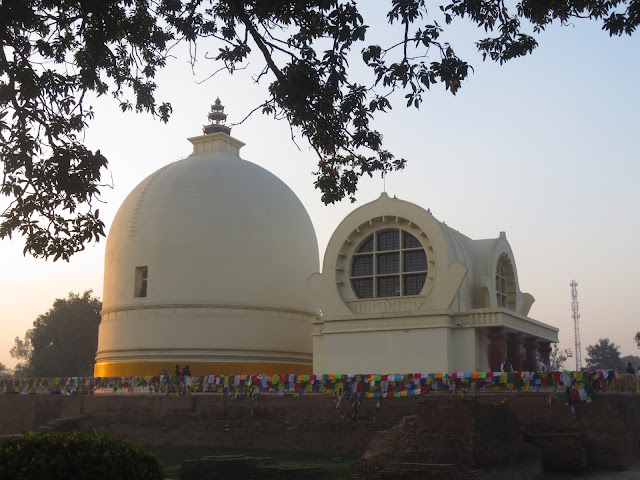The temples of Bagan (Myanmar)
From my diary (November 2011)
At six that evening, the coach leaves Yangon station for my next destination: the mythical Bagan, the heart of Burmese Buddhism. Sitting next to me in the bus is Hlaing, a kindly entrepreneur, diminutive, with the whitest and most regular set of teeth I have ever seen. Together with his mother and his niece who are seated in the row in front of us, he has been invited to Bagan for the wedding of a dear friend’s son.
The light is beginning to fall as we leave
Yangon, and around us there is just the open countryside, with palms and other trees,
and here and there a few indigent stilted huts made of wood and vegetable
fibres, similar to those I had observed the previous year in Laos along the
road linking Ventiane to Luang Phrabang. When night falls, the nearly full moon
lights up an ancestral landscape, similar, I imagine, to how it must have appeared
in Europe a few centuries ago, dark, without any artificial lighting for miles
and miles. Every now and then, from out of the darkness emerge shadows of more
wooden huts, or of small villages along the road, and every so often a dim light
flickering through a window, perhaps an oil lamp. At a certain point, we stop
on the side of the road to relieve our bladders in the fields, above us a clear
sky, embroidered with hundreds of stars. It really is like having travelled
back in time, to a remote age when the night was truly night, and when Man was
still small in comparison to nature all around him, which he respected.
About ten hours after our departure
from Yangon, at around four in the morning, we arrive at one of the villages
close to Bagan’s vast archaeological area. The village, Nyaung U, lies on the
banks of the Irrawaddy River, arising from the confluence of the N’mai and Mali
rivers which, in turn, are born in the Himalayas. The Irrawaddy flows alongside
Mandalay and Bagan before dispersing into the waters of the Andaman Sea.
I get off at the mouth of the village,
following Hlaing who walks me to the small hotel where I intend to stay,
located near his friend’s house, while carts drawn by horses canter past us.
 |
| Bagan from Shwe San Daw |
 |
| One of the four big standing Buddhas inside Ananda Temple |
 |
| Ananda Temple (to the right) |








Accidenti che belle foto!
ReplyDelete